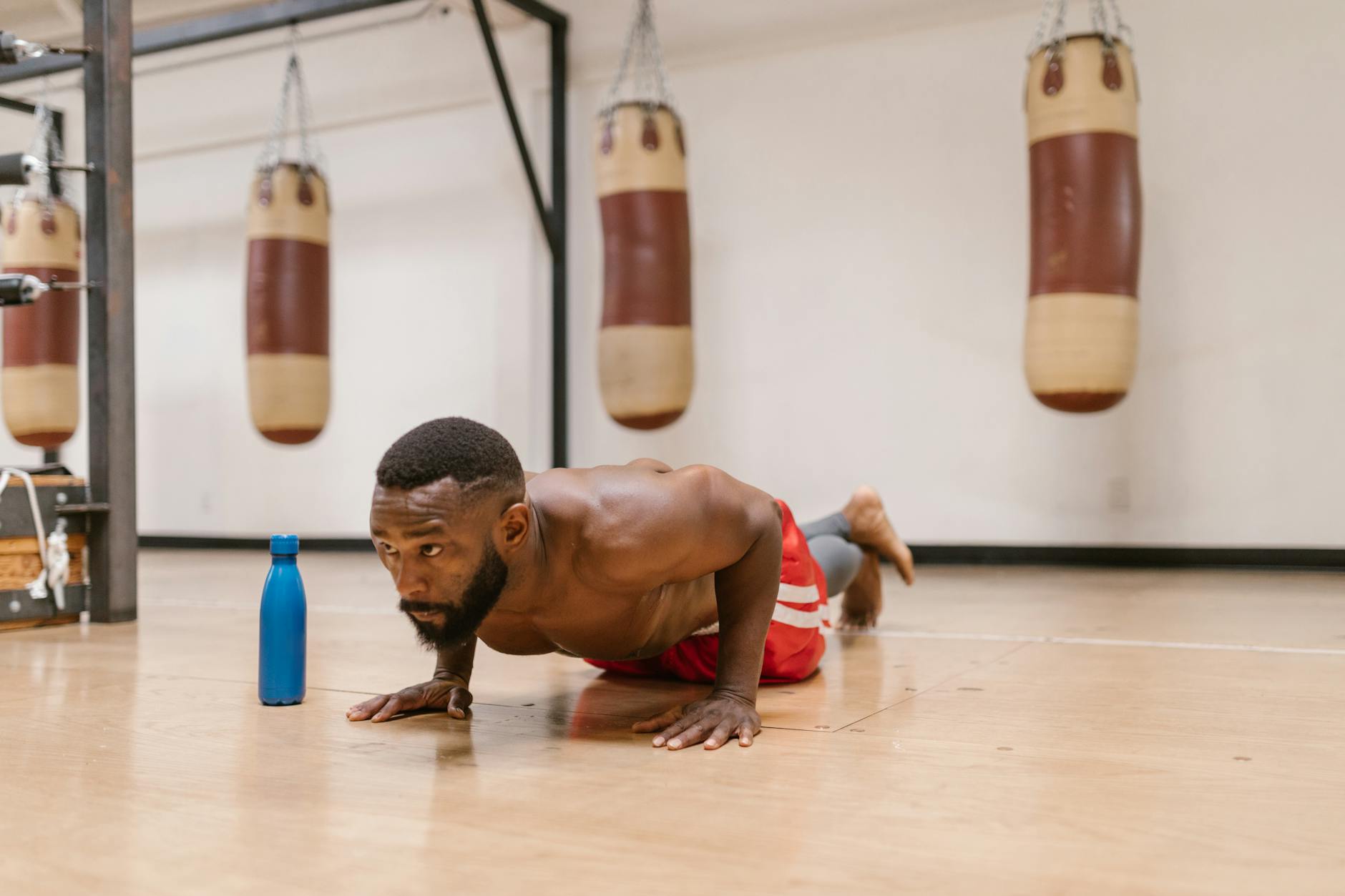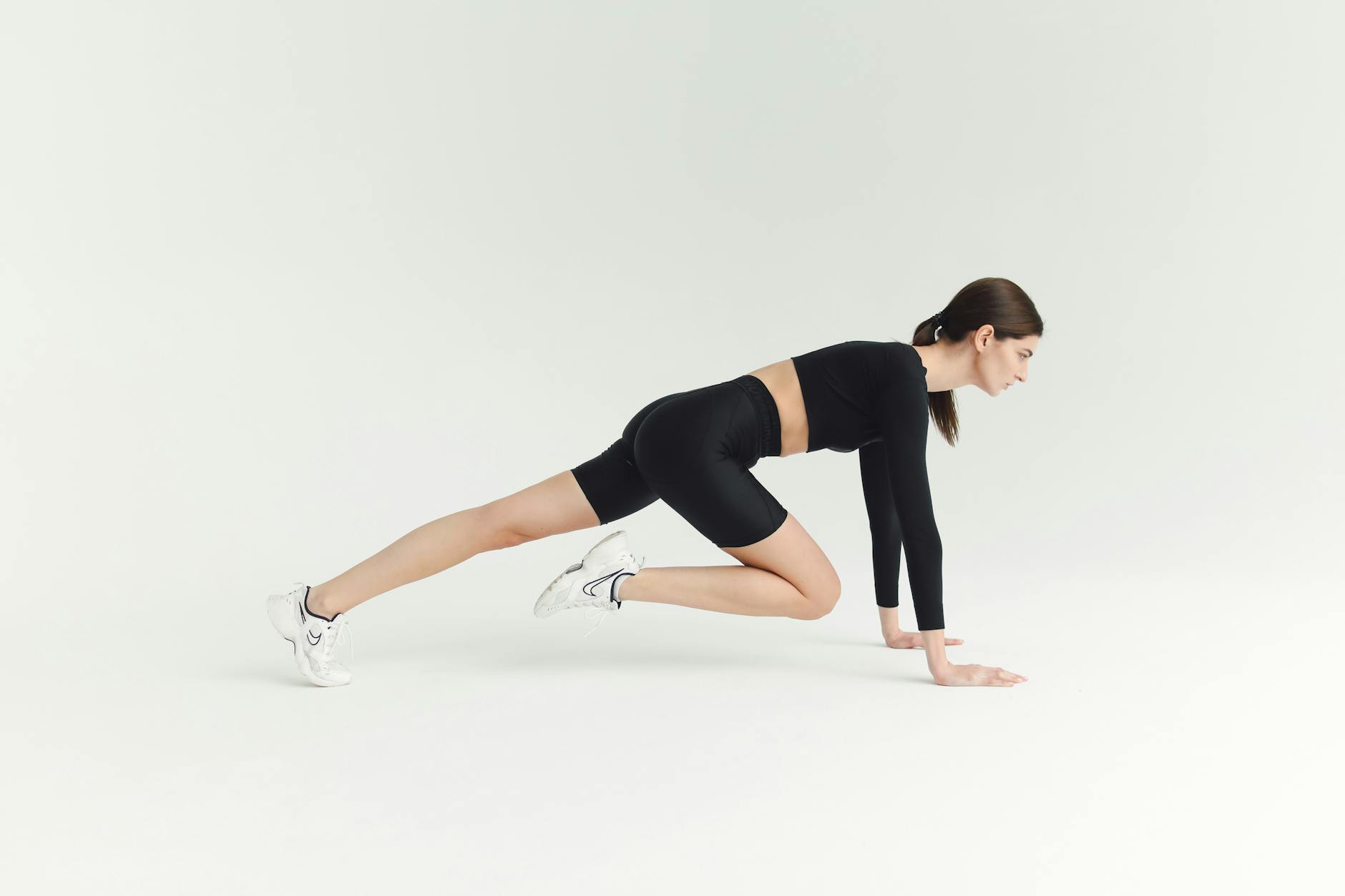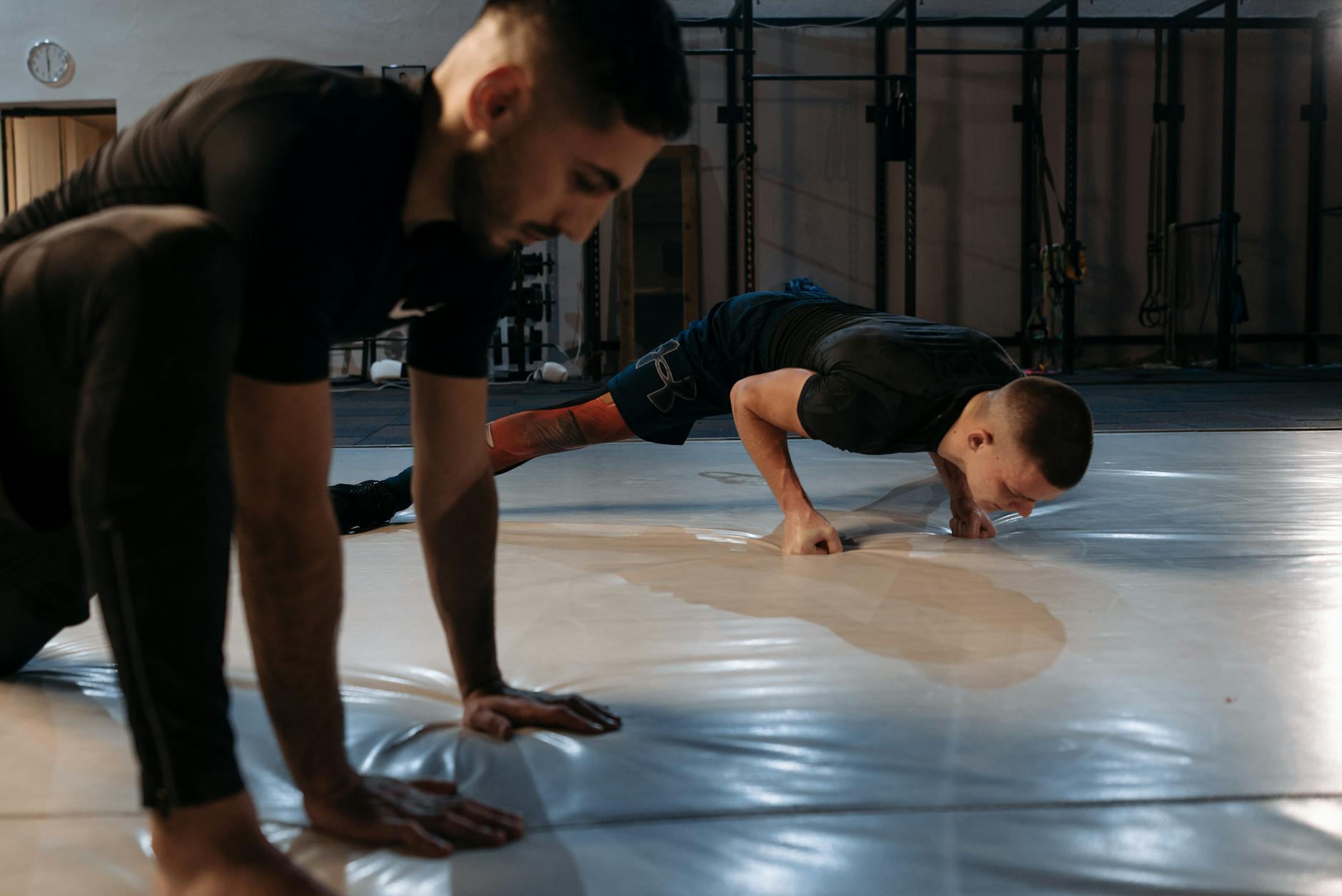
Are you tired of expensive gym memberships and complicated workout equipment? 💰💪 Look no further than your own body! Bodyweight workouts are revolutionizing the fitness world, offering a simple yet effective way to get in shape, build strength, and boost your overall health. But where do you start?
In this blog post, we will give a complete guide to bodyweight workouts for beginners from start to finish. Which will definitely help in your bodyweight workout. So stay with us from beginning to end and gain proper knowledge.
Imagine transforming your body using nothing but your own weight and determination. It sounds too good to be true, right? Many beginners feel overwhelmed, unsure of which exercises to do or how to create an effective routine. The good news is that anyone can master bodyweight workouts with the right guidance. From understanding the basics to avoiding common pitfalls, this beginner’s guide will walk you through everything you need to know to kickstart your bodyweight fitness journey.
Ready to unleash your body’s potential? Let’s dive into the essentials of bodyweight training , explore key exercises, and learn how to craft your perfect routine. We’ll also cover progression techniques, nutrition tips, and strategies to stay motivated. Whether you’re a complete novice or looking to refine your approach, this guide has got you covered. 🚀💪

Understanding Bodyweight Workouts
A. Definition and Benefits
Bodyweight workouts , also known as calisthenics, are exercises that utilize your own body weight as resistance. These workouts are a fundamental form of strength training that can be performed anywhere, anytime, without the need for specialized equipment. The beauty of bodyweight exercises lies in their simplicity and effectiveness.
Benefits of bodyweight workouts include:
-
- Improved strength and muscle tone
-
- Enhanced flexibility and mobility
-
- Increased cardiovascular endurance
-
- Better body awareness and coordination
-
- Reduced risk of injury compared to weight training
-
- Cost-effective fitness solution
B. Equipment-Free Fitness
One of the most appealing aspects of bodyweight workouts is their equipment -free nature. This type of training eliminates the need for expensive gym memberships or bulky home fitness equipment. All you need is your body and enough space to move.
Common bodyweight exercises include:
-
- Push-ups
-
- Squats
-
- Lunges
-
- Planks
-
- Burpees
These exercises can be modified to suit various fitness levels, making them ideal for beginners and advanced athletes alike.
C. Versatility and Convenience
Bodyweight workouts offer unparalleled versatility and convenience. Whether you’re at home, in a hotel room, or at the park, you can engage in an effective workout. This flexibility makes it easier to maintain a consistent fitness routine, even with a busy schedule.
Here’s a comparison of bodyweight workouts to traditional gym workouts:
| Aspect | Bodyweight Workouts | Traditional Gym Workouts |
|---|---|---|
| Equipment | None required | Machines, weights, etc. |
| Cost | Free | Gym membership or equipment costs |
| Location | Anywhere | Gym or dedicated space |
| Time Efficiency | High (no setup time) | Lower (travel and setup time) |
| Adaptability | Easily modified | May require different equipment |
The versatility of bodyweight exercises extends beyond location. You can easily adjust the difficulty of exercises by changing your body position, altering the tempo, or increasing the number of repetitions. This adaptability allows for continuous progression without the need for additional equipment.
Moreover, bodyweight workouts can be tailored to focus on specific fitness goals, such as:
-
- Building strength
-
- Improving endurance
-
- Enhancing flexibility
-
- Developing core stability
As we move forward, we’ll explore essential bodyweight exercises that form the foundation of an effective workout routine. These exercises will help you kickstart your journey into the world of equipment-free fitness, setting the stage for a sustainable and enjoyable fitness practice.

Essential Bodyweight Exercises for Beginners
Now that we understand the basics of bodyweight workouts, let’s dive into the essential exercises that form the foundation of any effective routine. These exercises target different muscle groups and provide a full-body workout without any equipment.
Push-ups: Chest and arm strength
Push-ups are a classic bodyweight exercise that primarily targets the chest, triceps, and shoulders. They also engage the core for stability.
-
- Standard push-up: Begin in a plank position, lower your body until your chest nearly touches the floor, then push back up.
-
- Knee push-up: A modified version for beginners, perform the same movement with your knees on the ground.
-
- Incline push-up: Place your hands on an elevated surface to reduce difficulty.
Squats: Lower body power
Squats are excellent for building lower body strength and improving overall fitness.
-
- Basic squat: Stand with feet shoulder-width apart, lower your body as if sitting back into a chair, then return to standing.
-
- Jump squat: Add explosiveness by jumping at the top of the movement.
-
- Wall sit: Hold a seated position against a wall for isometric strength.
Planks: Core stability
Planks are essential for building core strength and improving posture.
-
- Standard plank: Hold a push-up position with your forearms on the ground.
-
- Side plank: Balance on one forearm, stacking your feet.
-
- Plank reaches: From a standard plank, reach one arm forward, alternating sides.
Lunges: Balance and leg strength
Lunges help improve balance, coordination, and leg strength.
-
- Forward lunge: Step forward with one leg, lowering your hips until both knees are bent at 90-degree angles.
-
- Reverse lunge: Step backward instead of forward.
-
- Walking lunges: Perform continuous forward lunges, alternating legs.
Burpees: Full-body cardio
Burpees provide an intense full-body workout and boost cardiovascular fitness.
-
- Basic burpee: From standing, drop into a squat, place hands on the floor, kick feet back to a plank, do a push-up, jump feet forward, then jump up with arms raised.
-
- Modified burpee: Skip the push-up or jump for a less intense version.
Here’s a comparison of these exercises and their primary benefits:
| Exercise | Primary Muscles Worked | Cardiovascular Benefit | Difficulty Level |
|---|---|---|---|
| Push-ups | Chest, Triceps, Shoulders | Low | Moderate |
| Squats | Quadriceps, Hamstrings, Glutes | Medium | Low to Moderate |
| Planks | Core, Shoulders | Low | Low to High |
| Lunges | Quadriceps, Hamstrings, Glutes | Medium | Moderate |
| Burpees | Full Body | High | High |
Incorporating these exercises into your routine will provide a solid foundation for your bodyweight workout journey. Start with 2-3 sets of 8-12 repetitions for each exercise, adjusting as needed based on your fitness level. Remember to focus on proper form to maximize benefits and minimize the risk of injury.
As you become more comfortable with these exercises, you’ll be ready to create your first complete bodyweight routine, which we’ll explore in the next section.

Creating Your First Bodyweight Routine
Now that we’ve covered essential bodyweight exercises, let’s dive into creating your first routine. A well-structured bodyweight workout can be just as effective as gym-based training, and it’s crucial to approach it with the same level of planning and dedication.
A. Warm-up Importance
Before diving into your main workout, a proper warm-up is essential. It prepares your body for the exercises ahead, reducing the risk of injury and improving performance. Here’s a simple warm-up routine:
-
- Light jogging or marching in place (2-3 minutes)
-
- Arm circles (10 forward, 10 backward)
-
- Leg swings (10 per leg)
-
- Bodyweight squats (10 reps)
-
- Push-ups (5-10 reps)
B. Structuring Your Workout
When creating your bodyweight routine, focus on exercises that target different muscle groups. Here’s a sample structure for a full-body workout:
| Exercise | Sets | Reps | Rest Between Sets |
|---|---|---|---|
| Push-ups | 3 | 8-12 | 60 seconds |
| Squats | 3 | 12-15 | 60 seconds |
| Inverted Rows | 3 | 8-12 | 60 seconds |
| Lunges | 3 | 10-12 per leg | 60 seconds |
| Plank | 3 | 30-60 seconds | 60 seconds |
Aim to perform this routine 2-3 times a week, allowing at least one day of rest between sessions.
C. Proper Form and Technique
Maintaining proper form is crucial for maximizing the benefits of your workout and preventing injuries. Here are some key points to remember:
-
- Keep your core engaged throughout each exercise
-
- Breathe steadily; exhale during the exertion phase
-
- Move through the full range of motion for each exercise
-
- Perform movements in a controlled manner, avoiding sudden jerks
If you’re unsure about your form, consider using a mirror or recording yourself to check your technique. It’s also beneficial to start with easier variations of exercises and progress as you build strength and confidence.
D. Rest and Recovery
Rest is just as important as the workout itself. Here’s why:
-
- Muscle repair: Your muscles need time to recover and grow stronger
-
- Injury prevention: Overtraining can lead to fatigue and increased injury risk
-
- Performance improvement: Adequate rest allows you to perform better in subsequent workouts
Incorporate these recovery strategies into your routine:
-
- Get 7-9 hours of sleep per night
-
- Stay hydrated throughout the day
-
- Perform light stretching on rest days
-
- Listen to your body and take extra rest if needed
Remember, consistency is key in bodyweight training. Start with a routine you can maintain, and gradually increase the difficulty as you progress. In the next section, we’ll explore how to advance your workouts as you become stronger and more proficient in bodyweight exercises.

Progressing Your Bodyweight Workouts
As you become more comfortable with basic bodyweight exercises, it’s time to take your workouts to the next level. Progression is key to continuous improvement and avoiding plateaus in your fitness journey. Let’s explore four effective methods to advance your bodyweight training.
A. Increasing repetitions
One of the simplest ways to progress is by increasing the number of repetitions you perform for each exercise. This method builds muscular endurance and strength over time. Here’s a sample progression plan:
| Week | Push-ups | Squats | Pull-ups |
|---|---|---|---|
| 1 | 3×8 | 3×12 | 3×5 |
| 2 | 3×10 | 3×15 | 3×6 |
| 3 | 3×12 | 3×18 | 3×7 |
| 4 | 3×15 | 3×20 | 3×8 |
Gradually increase reps each week, ensuring proper form throughout the progression.
B. Adding time under tension
Time under tension (TUT) refers to the duration your muscles are under stress during an exercise. Increasing TUT can lead to greater muscle growth and strength gains. Try these techniques:
-
- Slow down the eccentric (lowering) phase of each movement
-
- Pause at the bottom of exercises like squats or push-ups
-
- Perform isometric holds at various points during an exercise
For example, in a push-up, lower yourself slowly over 3-4 seconds, hold at the bottom for 2 seconds, then push up explosively.
C. Incorporating variations
As you master basic exercises, introduce variations to challenge your body in new ways:
-
- Push-ups: Diamond push-ups, decline push-ups, one-arm push-ups
-
- Squats: Jump squats, pistol squats, Bulgarian split squats
-
- Pull-ups: Chin-ups, wide-grip pull-ups, L-sit pull-ups
-
- Planks: Side planks, plank jacks, mountain climber planks
These variations target muscles from different angles and intensities, promoting further strength and muscle development.
D. Combining exercises
Combining exercises creates compound movements that engage multiple muscle groups simultaneously, increasing workout efficiency and overall body strength. Try these combinations:
-
- Burpee pull-ups: Perform a burpee, then do a pull-up at the top
-
- Push-up to mountain climber: Do a push-up, then bring alternating knees to your chest
-
- Squat jump to tuck jump: Perform a squat jump, then immediately do a tuck jump
By implementing these progression techniques, you’ll continue to challenge your body and see improvements in strength, endurance, and overall fitness. Remember to listen to your body and progress at a pace that feels challenging yet manageable. As you advance in your bodyweight training, you’ll discover endless possibilities for creating effective, equipment-free workouts.
Common Mistakes to Avoid
As you embark on your bodyweight workout journey, it’s crucial to be aware of potential pitfalls that could hinder your progress. By understanding and avoiding these common mistakes, you’ll set yourself up for success and maximize the benefits of your training.
A. Neglecting proper form
One of the most critical aspects of any workout routine is maintaining proper form. With bodyweight exercises, it’s easy to fall into the trap of prioritizing quantity over quality. However, this approach can lead to:
-
- Reduced effectiveness of exercises
-
- Increased risk of injury
-
- Slower progress towards your fitness goals
To avoid this mistake:
-
- Start with basic variations of exercises
-
- Focus on mastering the correct technique before increasing repetitions
-
- Use mirrors or video recordings to check your form
-
- Consider working with a fitness professional to ensure proper technique
B. Skipping warm-ups
Many beginners underestimate the importance of warming up before a bodyweight workout. Skipping this crucial step can result in:
-
- Increased risk of muscle strains and injuries
-
- Reduced performance during the main workout
-
- Longer recovery times
Implement these warm-up strategies:
-
- Dynamic stretching
-
- Light cardio exercises (e.g., jogging in place, jumping jacks)
-
- Joint mobilization exercises
-
- Bodyweight exercises at a lower intensity
| Warm-up Exercise | Duration/Repetitions |
|---|---|
| Arm circles | 30 seconds |
| High knees | 30 seconds |
| Bodyweight squats | 10-15 repetitions |
| Push-ups | 5-10 repetitions |
C. Overtraining
Enthusiasm for your new workout routine is great, but overtraining can be counterproductive. Signs of overtraining include:
-
- Persistent fatigue
-
- Decreased performance
-
- Increased susceptibility to illness
-
- Mood changes and irritability
To prevent overtraining:
-
- Start with 2-3 workouts per week and gradually increase frequency
-
- Listen to your body and adjust intensity as needed
-
- Incorporate deload weeks every 4-6 weeks
-
- Ensure adequate sleep and nutrition
D. Ignoring rest days
Rest days are not just for relaxation; they’re crucial for muscle recovery and growth. Failing to include rest days in your routine can lead to:
-
- Increased risk of injury
-
- Plateaued progress
-
- Mental burnout
Optimize your rest days by:
-
- Scheduling 1-2 rest days per week
-
- Engaging in light activities like walking or yoga on rest days
-
- Focusing on proper nutrition and hydration
-
- Getting adequate sleep (7-9 hours per night)
By avoiding these common mistakes, you’ll create a solid foundation for your bodyweight training journey. Remember, consistency and patience are key to achieving your fitness goals. As you progress in your bodyweight workouts, it’s essential to fuel your body properly to support your training efforts and recovery. Let’s explore the importance of nutrition in bodyweight training success.

Nutrition for Bodyweight Training Success
Now that we’ve covered the essential aspects of bodyweight workouts, let’s focus on a crucial element that can significantly impact your progress: nutrition. Proper nutrition is the fuel that powers your bodyweight training and helps you achieve your fitness goals.
Balanced Diet Essentials
A balanced diet is the foundation of any successful fitness regimen, including bodyweight training. To support your workouts and overall health, aim to include:
-
- Lean proteins (chicken, fish, tofu)
-
- Complex carbohydrates (whole grains, sweet potatoes)
-
- Healthy fats (avocados, nuts, olive oil)
-
- Fruits and vegetables (for vitamins and minerals)
Here’s a simple breakdown of macronutrient ratios for bodyweight training:
| Macronutrient | Percentage of Daily Calories |
|---|---|
| Protein | 20-30% |
| Carbohydrates | 40-50% |
| Fats | 20-30% |
Protein Intake for Muscle Repair
Protein is essential for muscle repair and growth, especially after intense bodyweight workouts. Aim for 1.6 to 2.2 grams of protein per kilogram of body weight daily. Good protein sources include:
-
- Lean meats (chicken, turkey, lean beef)
-
- Fish (salmon, tuna, tilapia)
-
- Eggs
-
- Greek yogurt
-
- Plant-based options (lentils, quinoa, tofu)
Hydration Tips
Proper hydration is crucial for optimal performance during bodyweight exercises. Here are some tips to stay well-hydrated:
-
- Drink water throughout the day, not just during workouts
-
- Aim for 8-10 glasses of water daily
-
- Monitor urine color (pale yellow indicates good hydration)
-
- Increase water intake on hot days or during intense workouts
Pre and Post-Workout Nutrition
What you eat before and after your bodyweight training sessions can significantly impact your performance and recovery. Here’s a guide:
Pre-workout:
-
- Eat a light meal 1-2 hours before exercising
-
- Focus on complex carbohydrates for sustained energy
-
- Include a small amount of protein
Post-workout:
-
- Consume a meal within 30-60 minutes after your workout
-
- Include both protein and carbohydrates to aid recovery
-
- Consider a protein shake for convenience
Remember, nutrition is highly individual, and what works best for you may require some experimentation. Listen to your body and adjust your diet as needed to support your bodyweight training goals.
With proper nutrition fueling your bodyweight workouts, you’ll be well-equipped to make steady progress and achieve your fitness objectives. Next, we’ll explore effective ways to track your progress and stay motivated throughout your bodyweight training journey.

Tracking Progress and Staying Motivated
Now that you’ve learned about the essentials of bodyweight workouts, creating routines, and proper nutrition, let’s focus on how to track your progress and stay motivated throughout your fitness journey.
Setting Realistic Goals
Setting achievable goals is crucial for maintaining motivation and tracking your progress effectively. When it comes to bodyweight training, consider the following types of goals:
-
- Performance goals: Mastering specific exercises or increasing repetitions
-
- Consistency goals: Sticking to your workout schedule
-
- Physical goals: Improving body composition or overall fitness
| Goal Type | Example |
|---|---|
| Performance | Perform 10 consecutive push-ups |
| Consistency | Complete 3 workouts per week for a month |
| Physical | Reduce body fat percentage by 2% |
Remember to make your goals SMART: Specific, Measurable, Achievable, Relevant, and Time-bound. This approach will help you stay focused and motivated throughout your bodyweight training journey.
Keeping a Workout Journal
Maintaining a workout journal is an excellent way to track your progress and stay accountable. Here’s what you should include in your journal:
-
- Date and time of each workout
-
- Exercises performed
-
- Number of sets and repetitions
-
- Rest periods between sets
-
- Any modifications or progressions used
-
- How you felt during and after the workout
By consistently logging your workouts, you’ll be able to see patterns in your progress and identify areas for improvement. Additionally, reviewing your journal can provide a sense of accomplishment and motivation to keep pushing forward.
Celebrating Milestones
Acknowledging and celebrating your achievements, no matter how small, is essential for maintaining motivation. Some milestones to celebrate in your bodyweight training journey include:
-
- Completing your first full week of consistent workouts
-
- Mastering a new exercise or progression
-
- Reaching a specific number of repetitions for an exercise
-
- Noticing improvements in your overall strength and endurance
Consider rewarding yourself with something meaningful when you reach these milestones, such as new workout gear or a relaxing massage.
Finding an Accountability Partner
Having someone to share your fitness journey with can significantly boost your motivation and commitment. An accountability partner can be:
-
- A friend or family member with similar fitness goals
-
- A member of an online fitness community
-
- A personal trainer or coach
Your accountability partner can provide support, encouragement, and friendly competition. Schedule regular check-ins to discuss your progress, share challenges, and celebrate each other’s successes.
By implementing these strategies for tracking progress and staying motivated, you’ll be well-equipped to maintain your enthusiasm for bodyweight workouts and achieve long-term success in your fitness journey. Remember, consistency is key, and every small step forward counts towards your overall progress.

Bodyweight workouts offer an accessible and effective way to build strength, improve fitness, and transform your body without the need for expensive equipment or gym memberships. By mastering essential exercises, creating a balanced routine, and progressively challenging yourself, you can achieve remarkable results using just your own body weight. Remember to fuel your workouts with proper nutrition, avoid common pitfalls, and track your progress to stay motivated on your fitness journey.
As you embark on your bodyweight training adventure, embrace the simplicity and versatility of this workout style. Whether you’re at home, traveling, or outdoors, you have everything you need to maintain your fitness routine. Start with the basics, stay consistent, and watch as your strength, endurance, and confidence grow. Your body is your most powerful tool – harness its potential and unlock a healthier, stronger version of yourself through bodyweight workouts.










